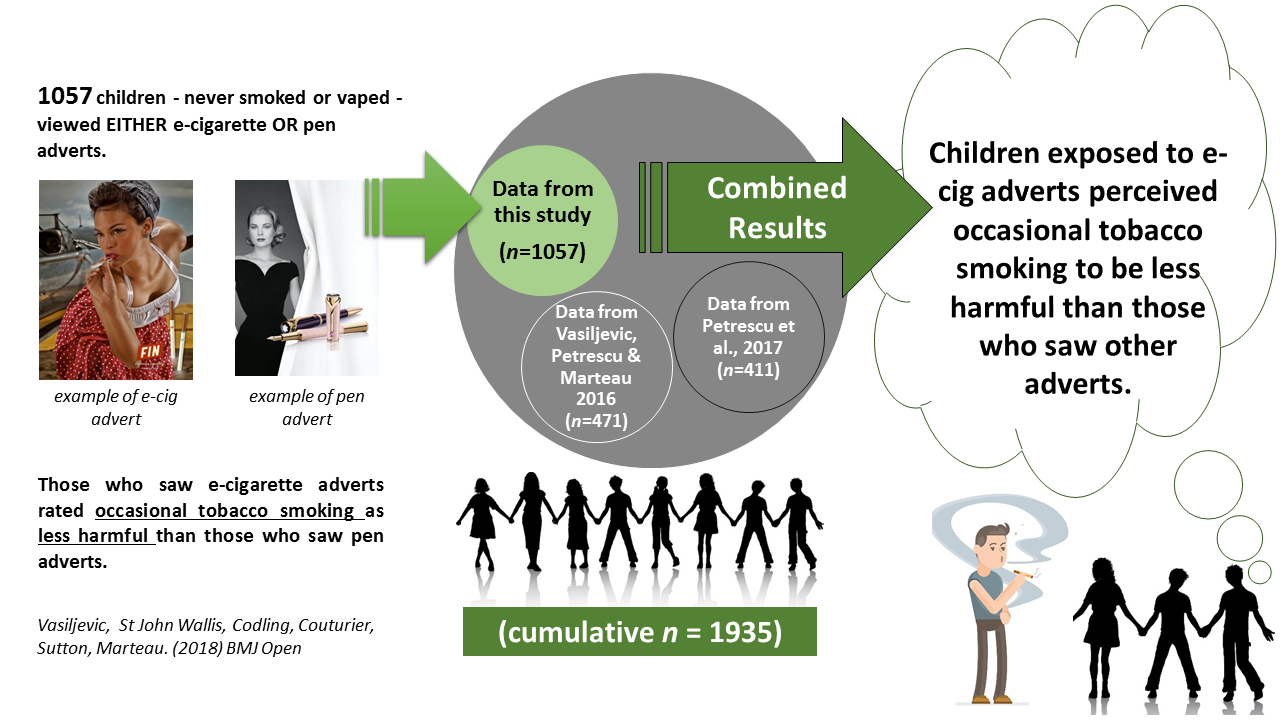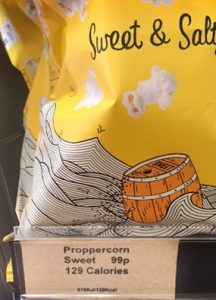In two previous studies, we found that children exposed to e-cigarette adverts perceived occasional tobacco smoking as less harmful than children not exposed to such adverts. In this paper, we replicate and extend these findings using a larger sample, a stronger control condition and an updated meta-analysis.

This study adds to existing evidence that exposing children to adverts for e-cigarettes may reduce how harmful they perceive tobacco smoking to be. Further studies are warranted, using longitudinal and experimental designs, to assess a wider range of possible impacts of the marketing of e-cigarettes including attitudes towards the tobacco industry and tobacco control policies.
E-cigarette Adverts and Children’s Perceptions of Tobacco Smoking Harms: An Experimental Study. Vasiljevic, St John Wallis, Codling, Couturier, Sutton, Marteau, BMJ Open. Access full text.



